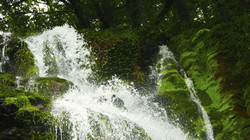Europe and Chile unite for clean water
The World Health Organization (WHO) has reported annual death rate of 5 million people as a result of the use of contaminated water. This figure could be reduced by introduction of effective purification technologies and improvement of ecological awareness. The CHILTURPOL2 (Innovative materials and methods for water treatment) project investigated new materials for water treatment. Two compounds were selected for study: arsenic and chromium oxyanions – both of which are found in Chilean and European surface aquifers. Project partners investigated the use of enhanced filtration processes to remove both studied components from water. Dangerous chemical species were absorbed onto soluble polymers, creating large complexes that were easily stopped by the porous membrane. Other approaches involved the use of solvent impregnated resins and porous polymer particles carrying selective ligands on their surface. The benefits to these approaches are that only small amounts of the sorbent are needed and the hybrid process is easy to control and scale up. CHILTURPOL2 outcomes have advanced the scientific relationship between Chile and Europe as related to water treatment. They also helped to promote a new market for innovative materials and technologies. In addition, the initiative will lead to improved teaching programmes, putting them in line with scientific, industrial and social challenges.
Keywords
Arsenic, chromium, purification technologies, water treatment, surface aquifers

